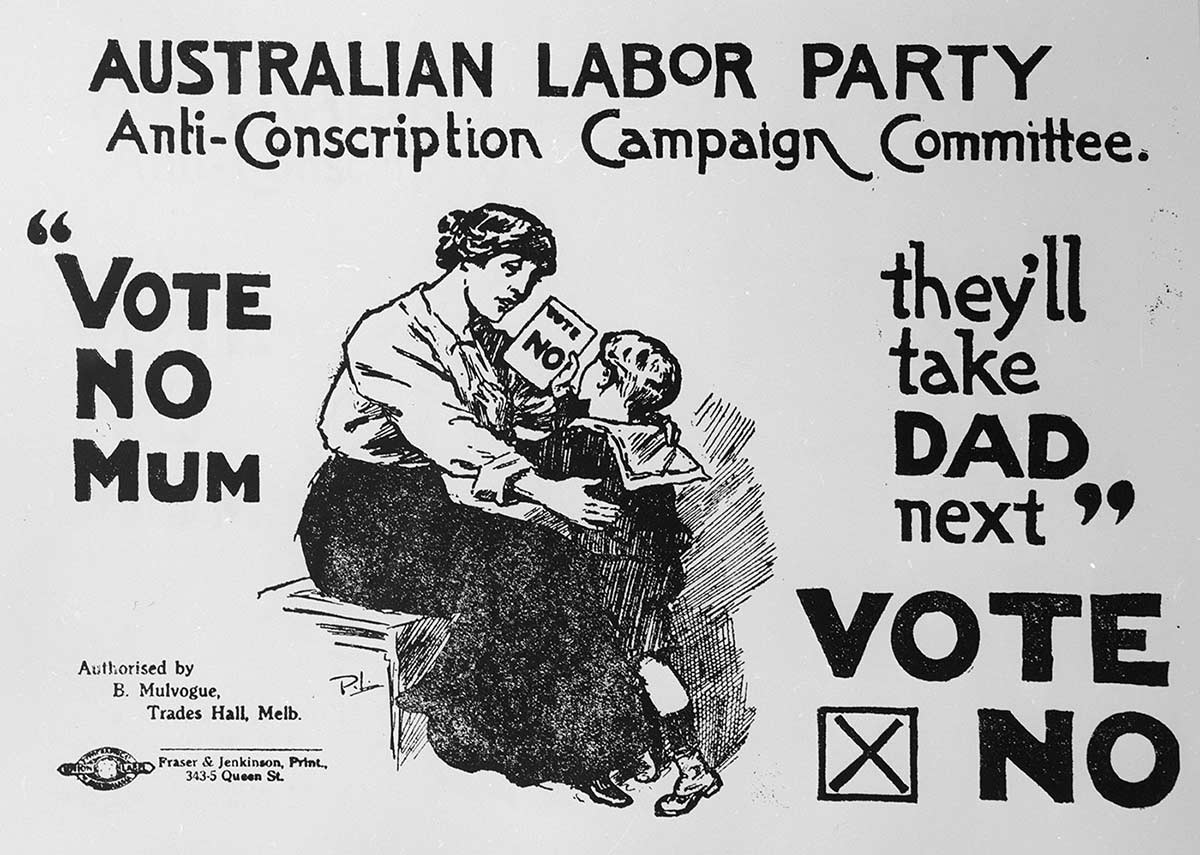


 Source: National Museum of Australia
Source: National Museum of Australia
As the war ground on during World War I, the brutal realities of war meant that army volunteers began to slow. To try and meet the demand for more soldiers, the Australian Government hosted referenda to let the nation decide if conscription should be introduced to meet demand. Read through the resources below to learn more about the conscription debate in Australia during World War I.
At the beginning of the war recruitment numbers were so high that men had to be turned away by recruitment officers. However the number of recruits declined as the war went on and as the casualty rates continued to increase. By 1916 there was a shortage of men volunteering to enlist. Conscription became an option that the Australian government increasingly pushed for. Read through this website to learn more.
With the outbreak of war in Europe in August 1914 the Australian Government committed the nation to supporting Britain and its allies in the defeat of the German aggressor. To meet this obligation the Australian army required rapid expansion and did this by calling for volunteers. Men flocked to enlist, but initially entry requirements were strict. The plan was to have half the contingent made up of men with experience, either already serving in the army, trained militiamen or those with previous war service. The rest of the force was to be made up of physically fit volunteers between the ages of eighteen and thirty five years who were five feet six inches and above. However, enlistments began to decline. Read through this article to learn more about recruitment and conscription in World War I.
Australia did not have a program of conscription at the outbreak of World War One. All the Australians who fought in World War I volunteered for service. Two conscription referenda were held, one in 1916 and another in 1917, and in both the ‘No’ campaign was successful. Many of the trade union collections at UMA hold material about both sides of the campaign. This article looks at a few key documents relating to the “No” campaign.
Unlike the other countries engaged in World War I, conscription was not introduced in Australia. All the Australians who fought in World War I were volunteers. Prime Minister Billy Hughes made two attempts to introduce conscription: two conscription referenda were held in 1916 and 1917. Both lost to the 'no' vote. Read through this website to learn more.
At the outbreak of the First World War, the number of people volunteering to enlist for the Australian Imperial Force (AIF) was so high that recruitment officers were forced to turn people away. As the war went on, casualty rates increased and the number of volunteers declined. By 1916 the AIF faced a shortage of men. Read through this website to learn more about how conscription was considered to meet this need.
Even before the war began, the Australian Government made an unwavering commitment to supporting its closest ally, the United Kingdom. At the outbreak of the war, many men volunteered to enlist in the newly formed Australian Imperial Force (AIF) to serve overseas. A government policy for conscription would have forced eligible Australian men into military service overseas with the AIF. Conscription was a contentious issue in the Australian community. It was hotly debated amongst Australia's political and religious leaders at the time. Read through this website to learn more.

